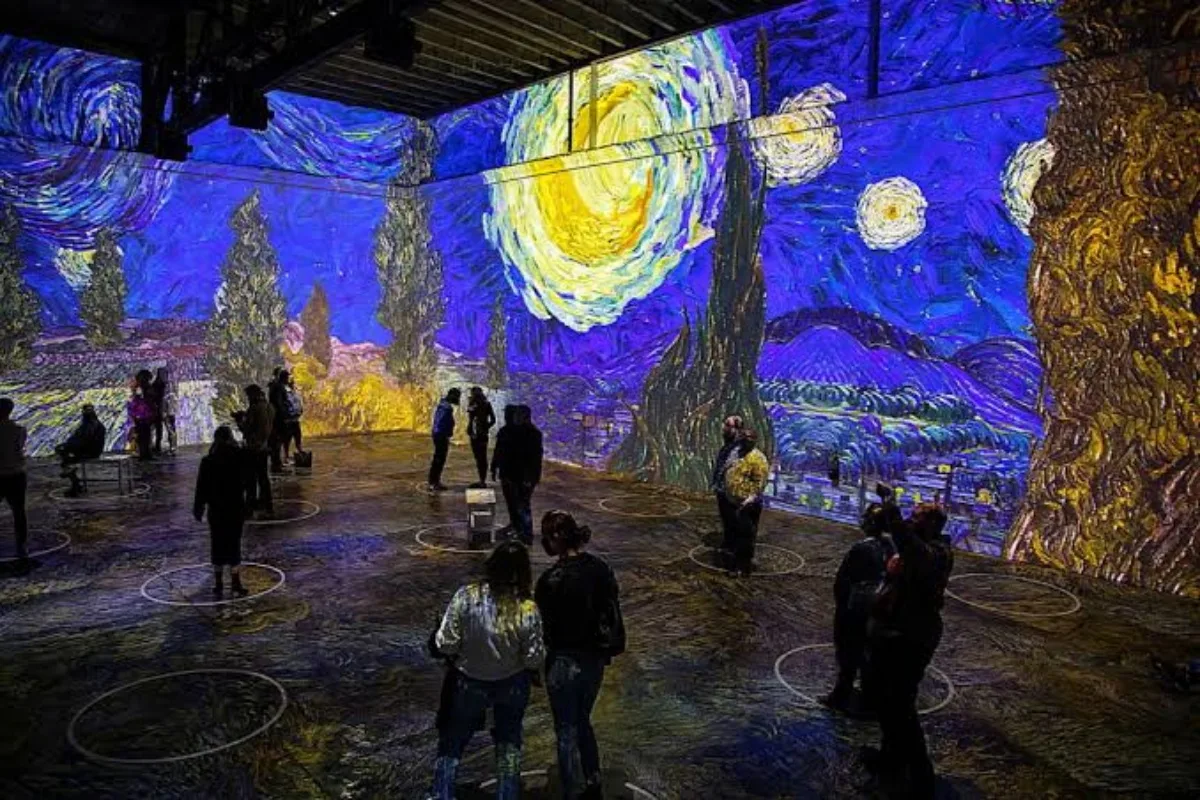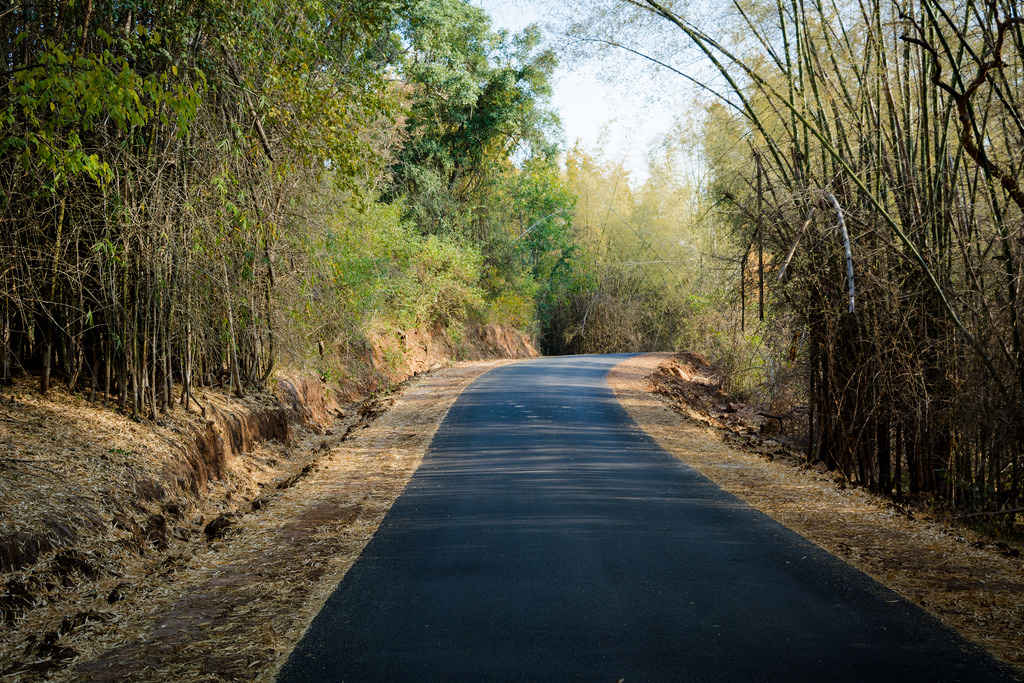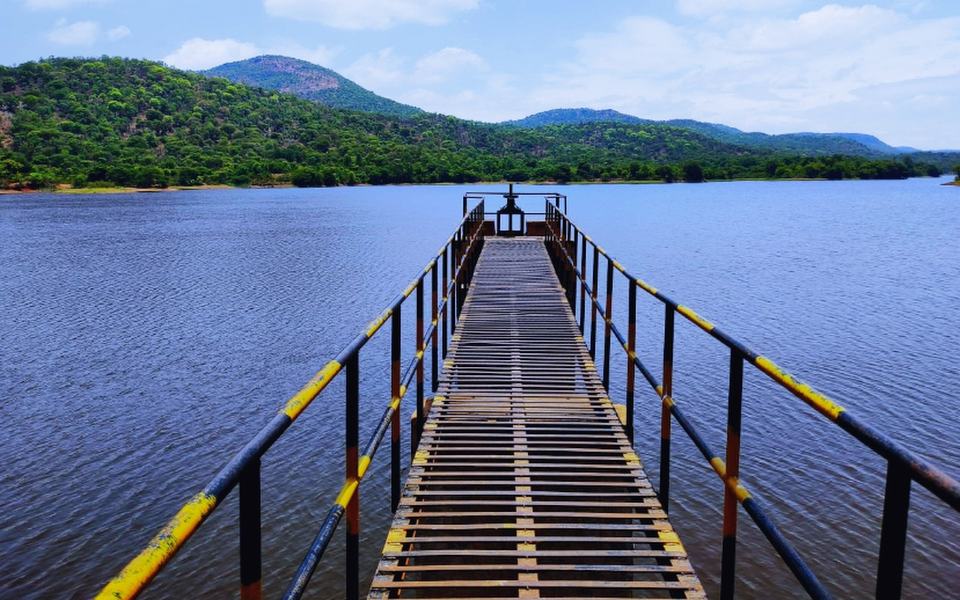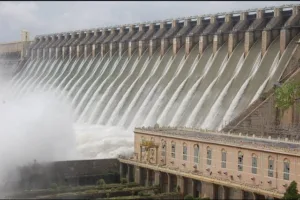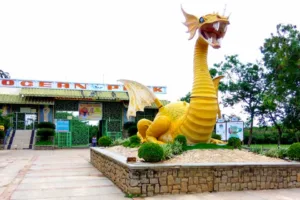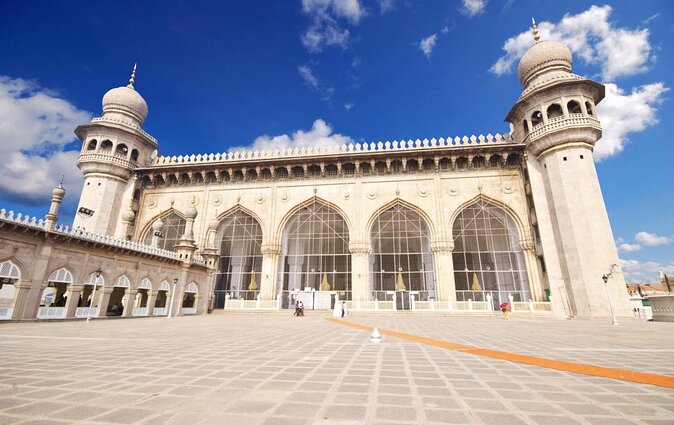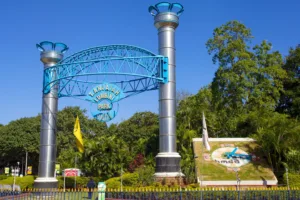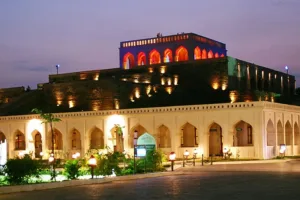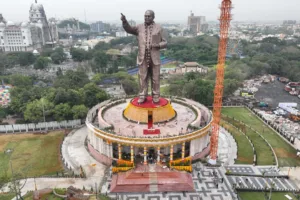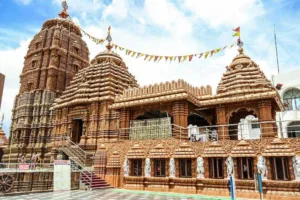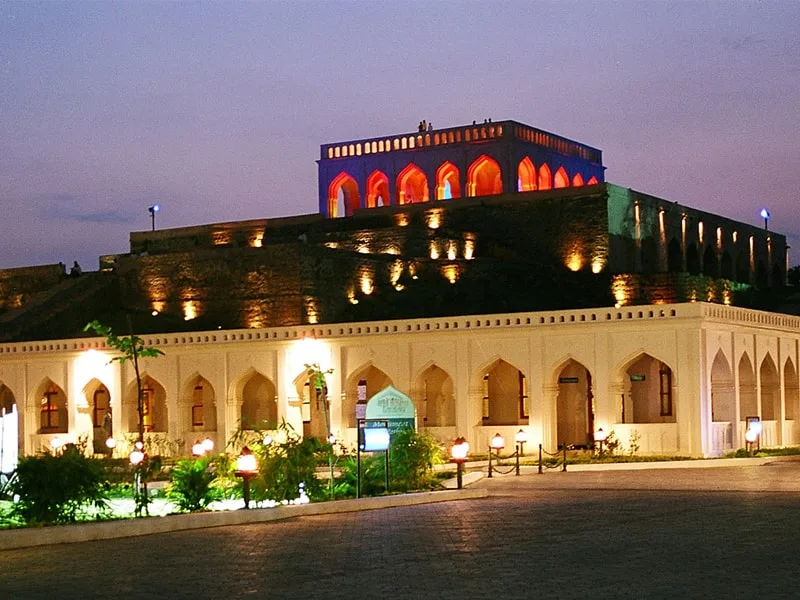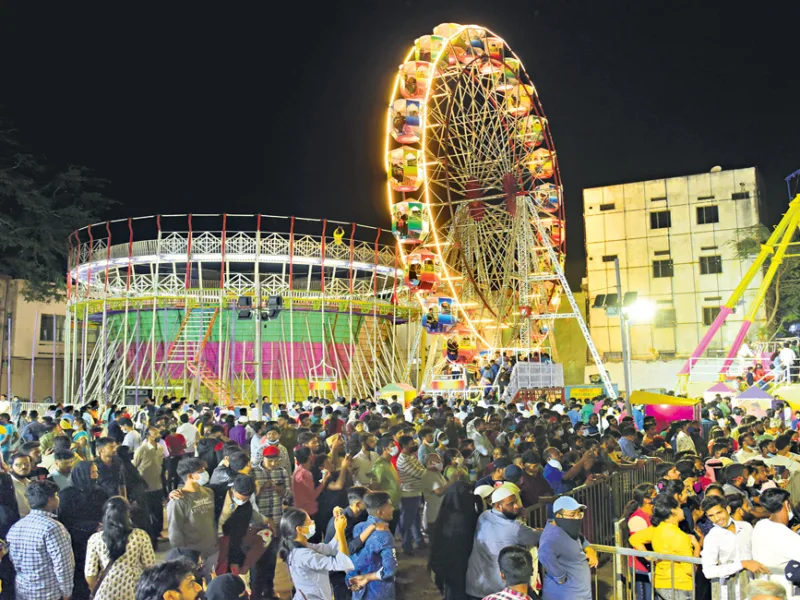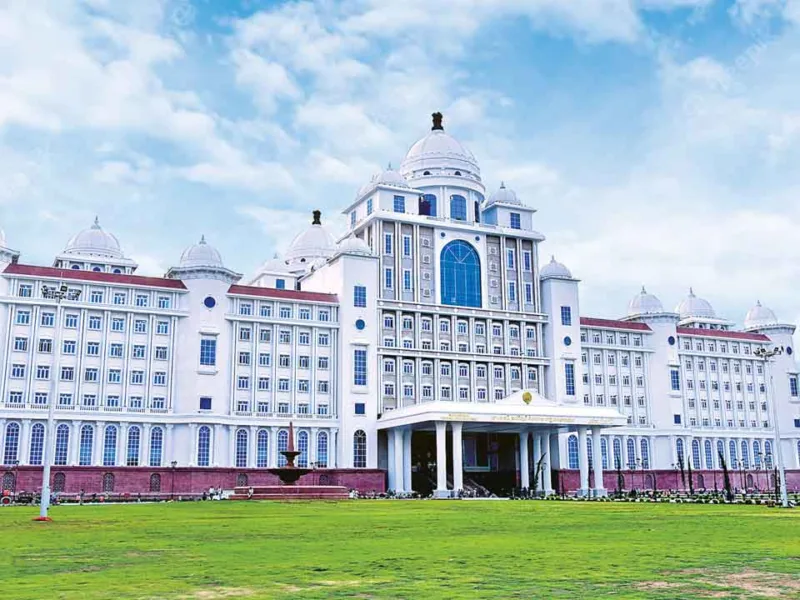Embark on a Spiritual Odyssey: Famous Temples Across India’s States
India, a land of diverse cultures and religions, is renowned for its rich spiritual heritage and iconic temples that stand as testaments to centuries of devotion. From the northern Himalayan region to the southern tip of the subcontinent, every state in India boasts magnificent temples that attract millions of pilgrims and tourists alike. In this comprehensive guide, we will take you on a sacred journey through the famous temples in each Indian state, unraveling the religious significance, architectural marvels, and the unique spiritual experiences they offer.
Andaman and Nicobar Islands:
1. Cellular Jail: While not a traditional temple, the Cellular Jail in Port Blair has historical significance. It was once a colonial prison used to detain Indian freedom fighters during British rule. Today, it serves as a memorial to honor the sacrifices of those who fought for India’s independence.
Andhra Pradesh:
2. Tirumala Venkateswara Temple: Located in Tirupati, this temple dedicated to Lord Venkateswara (an incarnation of Lord Vishnu) is one of the most visited temples in the world. The temple’s intricate Dravidian architecture, ancient rituals, and divine atmosphere attract millions of devotees every year.
3. Srisailam Temple: Situated on the banks of the Krishna River, Srisailam is a famous pilgrimage site dedicated to Lord Shiva. The temple’s architecture and serene surroundings amidst dense forests and hills create a tranquil atmosphere for spiritual seekers.
4. Kanaka Durga Temple: Overlooking the city of Vijayawada, this temple is dedicated to Goddess Kanaka Durga, an embodiment of feminine power. Perched on Indrakeeladri Hill, the temple offers a panoramic view of the city and the Krishna River.
Arunachal Pradesh:
5. Parshuram Kund: Although Arunachal Pradesh is not known for many temples, the Parshuram Kund is a significant pilgrimage site. Situated in Lohit district, this sacred kund (pond) is believed to be the spot where Lord Parshuram performed penance.
Assam:
6. Kamakhya Temple: Perched atop Nilachal Hill in Guwahati, the Kamakhya Temple is one of the Shakti Peethas, where the womb and genitals of Goddess Sati are said to have fallen. The temple’s unique architecture and Tantric rituals make it a revered site for devotees.
Bihar:
7. Mahabodhi Temple: Located in Bodh Gaya, this temple marks the spot where Lord Buddha is believed to have attained enlightenment under the Bodhi tree. It is one of the holiest Buddhist sites and a UNESCO World Heritage site.
Chhattisgarh:
8. Bambleshwari Temple: Situated atop a hill in Dongargarh, this temple dedicated to Goddess Bambleshwari is a popular pilgrimage destination. The temple’s location and panoramic views of the surrounding landscape add to its allure.
Goa:
9. Shanta Durga Temple: One of the largest and most famous temples in Goa, the Shanta Durga Temple is dedicated to Goddess Durga. The temple’s blend of Hindu and Portuguese architectural styles reflects the region’s unique cultural heritage.
10. Mangeshi Temple: Nestled in picturesque surroundings in Ponda, Goa, the Mangeshi Temple is a prominent Shiva temple with a colorful history and striking Goan-style architecture.
Gujarat:
11. Somnath Temple: As one of the 12 Jyotirlingas (shrines dedicated to Lord Shiva), the Somnath Temple holds immense significance for Hindus. Located on the Arabian Sea coast in Prabhas Patan, the temple has withstood numerous invasions and reconstructions over the centuries.
12. Dwarkadhish Temple: Situated in Dwarka, this temple is dedicated to Lord Krishna, who is believed to have established his kingdom here. The temple’s captivating architecture and spiritual vibes attract devotees from far and wide.
Haryana:
13. Jyotisar Temple: Located in Kurukshetra, this temple is believed to be the place where Lord Krishna delivered the Bhagavad Gita to Arjuna during the Mahabharata battle. The temple complex also includes a sacred banyan tree.
Himachal Pradesh:
14. Jwalamukhi Temple: Situated in Kangra district, this temple is dedicated to Goddess Jwalamukhi, the “Flaming Goddess.” The temple is unique as there is no idol; instead, flames that arise naturally from the earth are worshipped as the manifestation of the goddess.
15. Baijnath Temple: Located in the town of Baijnath, the Baijnath Temple is an ancient temple dedicated to Lord Shiva. The temple’s intricate carvings and serene surroundings attract devotees and art enthusiasts alike.
16. Naina Devi Temple: Perched on a hilltop near Bilaspur, the Naina Devi Temple is dedicated to Goddess Naina Devi. The temple’s location offers breathtaking views of the surrounding valley.
Jharkhand:
17. Deori Temple: Situated near Ranchi, the Deori Temple is dedicated to Goddess Kali. The temple’s unique cylindrical shape and ancient stone carvings make it a fascinating religious site.
18. Basukinath Temple: Located in Dumka district, this temple is dedicated to Lord Shiva and attracts devotees seeking blessings and spiritual solace.
Karnataka:
19. Kukke Subramanya Temple: Nestled amidst the Western Ghats, this temple dedicated to Lord Subramanya (a form of Lord Murugan) is believed to have been built by Lord Indra. The temple’s natural setting adds to the spiritual experience.
20. Virupaksha Temple: Situated in Hampi, a UNESCO World Heritage site, the Virupaksha Temple is one of the oldest and most elaborate temples in Karnataka. Its impressive architecture and intricate carvings depict scenes from Hindu mythology.
Kerala:
21. Sabarimala Temple: Perched on the Sabarimala Hill in the Western Ghats, this temple is one of the holiest pilgrimage sites for Hindus. It is dedicated to Lord Ayyappa, and millions of devotees undertake the arduous pilgrimage every year during the Mandalam season.
22. Guruvayur Temple: Located in Thrissur, the Guruvayur Temple is dedicated to Lord Krishna. As one of the most important Krishna temples in India, it attracts devotees from across the country.
23. Padmanabhaswamy Temple: Situated in Thiruvananthapuram, the Padmanabhaswamy Temple is dedicated to Lord Vishnu. The temple’s intricate architecture, gold-plated exteriors, and immense wealth make it a unique and revered site.
Madhya Pradesh:
24. Khajuraho Temples: These UNESCO World Heritage-listed temples in Khajuraho are famous for their exquisite erotic sculptures and intricate architectural designs. The temples, built by the Chandela dynasty, represent a fusion of Hindu and Jain religious art. The sculptures depict various aspects of human life, divinity, and mythology, providing a unique insight into ancient Indian culture and society.
25. Omkareshwar Temple: Located on the Mandhata Island in the Narmada River, the Omkareshwar Temple is one of the 12 Jyotirlingas dedicated to Lord Shiva. The island’s shape resembles the sacred “Om” symbol, adding to the temple’s spiritual significance.
Maharashtra:
26. Shirdi Sai Baba Temple: Situated in the town of Shirdi, this temple is dedicated to the revered saint, Sai Baba. Devotees from all walks of life visit this temple to seek his blessings and experience a profound sense of peace and harmony.
27. Siddhivinayak Temple: Located in Mumbai, the Siddhivinayak Temple is dedicated to Lord Ganesha, the remover of obstacles. The temple’s popularity and spiritual significance make it one of the most visited temples in India.
28. Trimbakeshwar Temple: Situated in the Nashik district, the Trimbakeshwar Temple is another of the 12 Jyotirlingas dedicated to Lord Shiva. It is located near the source of the sacred Godavari River.
Manipur:
29. Shree Govindajee Temple: Located in Imphal, the capital city of Manipur, this temple is a significant Vaishnavite shrine dedicated to Lord Krishna. The temple’s architectural style is a beautiful amalgamation of Manipuri and Vaishnavite traditions.
Meghalaya:
30. Nartiang Durga Temple: Situated in the Jaintia Hills district, this temple is one of the oldest and largest Durga temples in Northeast India. The temple’s annual Durga Puja celebration attracts devotees from across the state.
Mizoram:
31. Solomon’s Temple: Located in the city of Aizawl, this temple is one of the largest churches in Mizoram and a significant landmark. The temple’s unique architecture and vibrant atmosphere reflect the religious diversity of the state.
Nagaland:
32. Kohima Cathedral: Situated in the capital city of Kohima, the Kohima Cathedral is one of the largest churches in Northeast India. The cathedral’s stunning architecture and serene surroundings make it a peaceful place for meditation and prayer.
Odisha:
33. Jagannath Temple: Located in Puri, the Jagannath Temple is one of the Char Dham pilgrimage sites for Hindus. It is dedicated to Lord Jagannath, his sister Subhadra, and his brother Balabhadra. The annual Rath Yatra, or Chariot Festival, is a grand event that attracts millions of devotees.
34. Konark Sun Temple: A UNESCO World Heritage site, the Konark Sun Temple is one of India’s most iconic temples. Dedicated to the sun god Surya, the temple’s architectural brilliance and intricate carvings make it a masterpiece of ancient Indian art and culture.
Punjab:
35. Golden Temple: Located in Amritsar, the Golden Temple, also known as Sri Harmandir Sahib, is the holiest shrine for Sikhs. Its golden dome, surrounded by a serene water tank (Amrit Sarovar), exudes a sense of spiritual serenity.
36. Durgiana Temple: Often referred to as the Silver Temple, the Durgiana Temple in Amritsar is dedicated to Goddess Durga. It shares architectural similarities with the Golden Temple and attracts visitors of all faiths.
Rajasthan:
37. Dilwara Temples: Situated in Mount Abu, the Dilwara Temples are a group of exquisitely carved Jain temples. Renowned for their intricate marble work, the temples are a marvel of Jain architecture and craftsmanship.
38. Brahma Temple: Located in Pushkar, this temple is one of the very few dedicated to Lord Brahma, the creator deity in Hinduism. The temple’s unique red spire and serene lake surroundings create a spiritual ambiance.
Sikkim:
39. Rumtek Monastery: Situated near Gangtok, the Rumtek Monastery is one of the most important monasteries of the Kagyu sect of Tibetan Buddhism. The monastery’s intricate murals, sculptures, and religious artifacts make it a treasure trove of Buddhist art and culture.
Tamil Nadu:
40. Meenakshi Amman Temple: Located in Madurai, the Meenakshi Amman Temple is a splendid example of Dravidian architecture. Dedicated to Goddess Meenakshi (Parvati) and Lord Sundareswarar (Shiva), the temple’s towering gopurams (entrance towers) and intricate carvings are awe-inspiring.
41. Brihadeeswarar Temple: A UNESCO World Heritage site, the Brihadeeswarar Temple in Thanjavur is dedicated to Lord Shiva. The temple’s massive Nandi statue and its splendid architecture attract art enthusiasts and spiritual seekers.
Telangana:
42. Bhadrakali Temple: Situated in Warangal, this temple is dedicated to Goddess Bhadrakali, an incarnation of Goddess Kali. The temple’s unique architecture and religious significance draw devotees from across the region.
43. Chilkur Balaji Temple: Also known as the Visa Balaji Temple, it is located on the outskirts of Hyderabad. Devotees believe that a visit to this temple fulfills their wishes, particularly related to obtaining visas for international travel.
Tripura:
44. Tripura Sundari Temple: Located in the ancient city of Udaipur, this temple is dedicated to Goddess Tripura Sundari (Kali). The temple’s striking architecture and religious significance make it a prominent pilgrimage site in Tripura.
Uttar Pradesh:
45. Kashi Vishwanath Temple: Located in Varanasi (Kashi), this temple is dedicated to Lord Shiva and is one of the holiest sites for Hindus. The temple’s location on the banks of the sacred Ganges River enhances its spiritual importance.
46. Banke Bihari Temple: Situated in Vrindavan, the Banke Bihari Temple is dedicated to Lord Krishna. The temple’s unique “Thakur Ji” form of worship and vibrant celebrations during festivals make it a must-visit destination for Krishna devotees.
47. Krishna Janmabhoomi Temple: Located in Mathura, this temple marks the birthplace of Lord Krishna. The temple complex includes the prison cell where Lord Krishna is believed to have been born.
Uttarakhand:
48. Badrinath Temple: Situated in the town of Badrinath, this temple is one of the four Char Dham pilgrimage sites for Hindus. Dedicated to Lord Vishnu, the temple is located on the banks of the Alaknanda River and surrounded by the majestic Garhwal Himalayas.
49. Kedarnath Temple: Another of the Char Dham pilgrimage sites, the Kedarnath Temple is dedicated to Lord Shiva. Perched at an altitude of over 3,500 meters, the temple’s remote location amidst snow-capped peaks adds to its spiritual significance.
50. Yamunotri Temple: The third Char Dham pilgrimage site, the Yamunotri Temple is dedicated to Goddess Yamuna. It is the source of the Yamuna River, and the temple’s serene surroundings offer a captivating spiritual experience.
51. Gangotri Temple: The fourth and final Char Dham pilgrimage site, the Gangotri Temple, is dedicated to Goddess Ganga. It is the source of the sacred Ganges River, and the temple’s setting amidst the Garhwal Himalayas is breathtaking.
West Bengal:
52. Dakshineswar Kali Temple: Situated on the eastern bank of the Hooghly River in Kolkata, this temple is dedicated to Goddess Kali. It was at this temple that the famous saint Ramakrishna Paramahamsa attained spiritual realization.
53. Belur Math: Founded by Swami Vivekananda, Belur Math is a significant spiritual center and temple dedicated to Sri Ramakrishna. Its serene ambiance and architectural beauty make it a popular destination for seekers of spirituality.
54. Kalighat Kali Temple: Located in Kolkata, the Kalighat Kali Temple is one of the most important Shakti Peethas. It is dedicated to Goddess Kali, and the temple’s historical and religious significance attracts devotees from all over India.
Chandigarh:
55. Nada Sahib Gurudwara: While not a traditional Hindu temple, the Nada Sahib Gurudwara holds immense religious significance for Sikhs. Situated on the banks of the Ghaggar River, the Gurudwara attracts devotees seeking spiritual solace.
Union Territories:
Daman and Diu:
56. Church of Bom Jesus: Located in Diu, the Church of Bom Jesus is a prominent Roman Catholic Church known for its beautiful architecture and religious significance.
Dadra and Nagar Haveli:
57. Vanganga Lake Garden Temple: Located in Silvassa, the Vanganga Lake Garden Temple offers a serene setting for meditation and reflection amidst lush greenery and a tranquil lake.
Lakshadweep:
58. Juma Masjid: While Lakshadweep is predominantly Muslim, there are no traditional Hindu temples on the islands. The Juma Masjid in Kavaratti is one of the prominent religious sites for Muslims in the archipelago.
Puducherry:
59. Sri Manakula Vinayagar Temple: Located in the heart of Puducherry, this temple is dedicated to Lord Ganesha. Its colorful façade and spiritual atmosphere draw visitors of all faiths.
60. Basilica of the Sacred Heart of Jesus: One of the most prominent churches in Puducherry, the Basilica of the Sacred Heart of Jesus showcases stunning Gothic-style architecture and is a significant Christian pilgrimage site.
India’s rich tapestry of temples is a reflection of the country’s diverse religious and cultural heritage. From the towering Himalayas to the sandy shores, each state in India offers a unique spiritual experience that draws travelers seeking solace, enlightenment, and a deeper connection with the divine. These famous temples are not only places of worship but also architectural wonders, repositories of art and culture, and a testimony to the enduring faith of millions of devotees.
As you embark on your journey to explore these sacred sites, may you be inspired by the devotion, history, and spirituality that infuse these temples with a profound sense of reverence and wonder. Whether you are a spiritual seeker or an art enthusiast, these temples will undoubtedly leave a lasting impression on your soul. Plan your pilgrimage wisely, embrace the diversity, and allow the spiritual energy of India’s famous temples to guide you on an unforgettable odyssey of self-discovery and inner peace.



